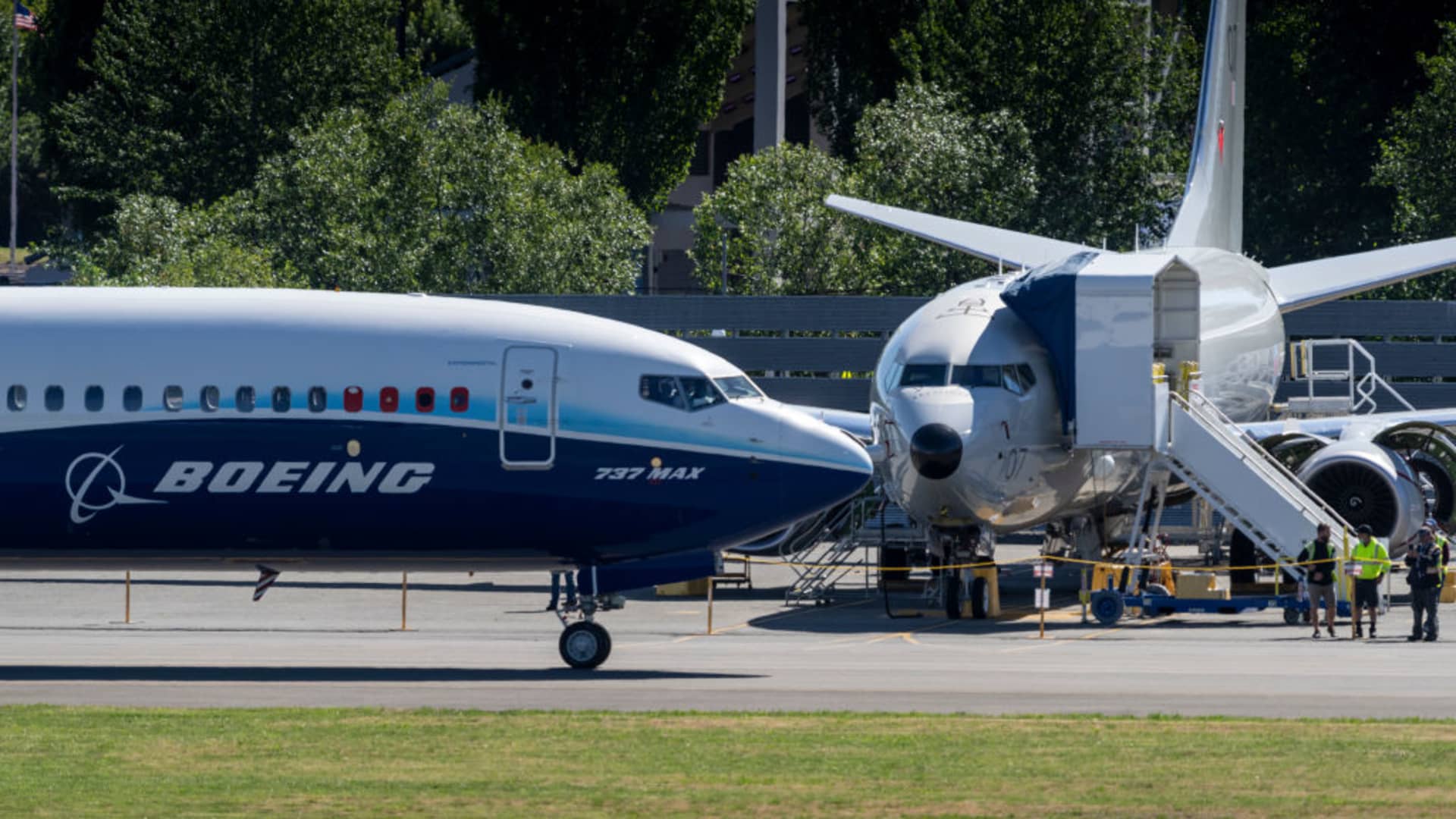A Boeing 737 MAX 10 airliner pauses while taxiing on the flight line before its first flight at Renton Municipal Airport on June 18, 2021 in Renton, Washington.
Stephen Brashear | Getty Images
Boeing reported a $3.3 billion quarterly loss Wednesday as problems in its defense unit countered strides in its commercial aircraft business.
The manufacturer, however, generated nearly $3 billion in free cash flow in the three months ended Sept. 30, up from outflows of $507 million a year earlier. Boeing reiterated its forecast to achieve positive free cash flow for the year.
Here’s how Boeing performed in the third quarter compared with analysts’ estimates complied by Refinitiv:
- Adjusted loss per share: $6.18 vs. expected earnings per share of 7 cents.
- Revenue: $15.96 billion vs. $17.76 billion expected.
The company’s shares were down around 1% in early trading.
Boeing reported losses of $2.8 billion in its defense unit on programs including the KC-46 tanker and Air Force One. The company previously disclosed losses of more than $1 billion associated with modifying two 747 jumbo jets to serve as Air Force One, a contract negotiated under former President Donald Trump.
“We’re squarely focused on maturing these programs, mitigating risks and delivering for our customers and their important missions,” Boeing CEO David Calhoun said in an employee note Wednesday.
The trouble in the defense unit has piled up as Boeing’s commercial unit is recovering from the Covid pandemic, boosted by a rebound in air travel.
Boeing’s commercial unit’s revenue rose 40% from a year ago to $6.26 billion. It delivered 112 planes in the third quarter, up from 85 a year earlier. Deliveries of its 787 Dreamliner resumed in August after a pause for much of the previous two years to address a series of manufacturing flaws.
Alaska Airlines on Wednesday said it would exercise options to buy 52 Boeing 737 Max planes for its fleet and rights for 105 more of them through 2030. The Seattle-based airline said the order was the largest in its 90-year history and the new planes will be used to replace older planes and for growth.
But Calhoun and other aerospace executives have said supply chain problems and labor shortages are hindering increases in production.
“We’re realistic about the environment we face and are taking comprehensive action,” Calhoun wrote to staff Wednesday. “Within our production facilities, we’re not pushing the system too fast. We’re slowing down when necessary and working hard to ensure work gets completed in sequence.”
Boeing has struggled to stabilize after two crashes of its 737 Max, one almost four years ago in Indonesia and another in Ethiopia five months later, a crisis that grounded the jets around the world.
The manufacturer is now trying to win federal regulator approval of new versions of that aircraft, the 737 Max 7 and 10, the smallest and largest in the family. But Boeing faces a year-end deadline to do so without adding additional alerting systems for pilots, under new legislation passed in the wake of the crashes.
Boeing executives will discuss results on a 10:30 a.m. ET call Wednesday with analysts, where the company will likely face questions about potential production increases of commercial jets and its latest timeline on certification of the new Max versions.
Image and article originally from www.cnbc.com. Read the original article here.

